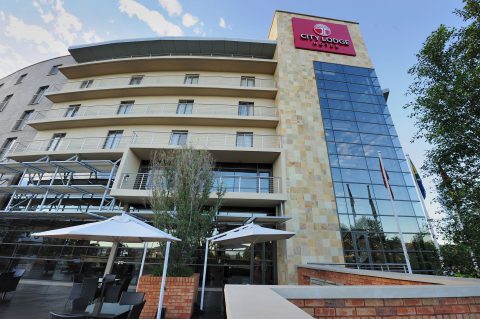Financial Mail Travel
Arabian Delight
Qatar has the Burj Doha, a 232-metre tall, steel-and-concrete, latticework-clad cylinder designed by Jean Nouvel, which glows in vibrant, changing hues at night. Also in Doha, there’s the Museum of Islamic Art, a sparkling repository of cultural artefacts designed by I M Pei.
Kuwait has its exquisitely rendered Sheik Jaber Al Ahmad Cultural Centre, the country’s only opera house, which features striking arabesque patterns perforating the angular construction.
Dubai, which already has Adrian D Smith’s Burj Khalifa soaring almost a kilometre into the sky, will soon see the opening of The Opus. Designed by the late Dame Zaha Hadid, it features a pixelated reflective facade rendering it near-invisible at night.
Last year’s architectural coup was the November opening of the Louvre Abu Dhabi, another Jean Nouvel design. The museum is to be part of a cluster of prestigious museums on Saadiyat Island, just across the water from the city, and now imagined as Abu Dhabi’s cultural nexus. It is the first international offshoot of the French cultural institution with naming rights linked to a deal between the Emiratis and the French government worth more than $1 billion. The deal allows Abu Dhabi to use the name for 30 years and includes access to the Louvre’s collections as well as a dozen more collections managed by a newly established French museums authority.
Nouvel’s design, a set of low, white gallery buildings covered by a monumental web-like steel and aluminium dome, takes inspiration from traditional Arab medina architecture. The dome’s delicate web-like structure follows the geometry of traditional Islamic mashrabiya latticework. The overall effect is quite futuristic, magically integrating water and channelling pools of light through the 180-metre diameter latticed dome onto the basalt and granite floors. Plus, there’s a stepped “concrete beach” enabling visitors to reach the water’s edge while inside the museum itself. With some 8 000 square metres of exhibition space, the Louvre Abu Dhabi is now the Arabian Peninsula’s largest museum. Its displays are impressive, too, with a core collection of 600 pieces, alongside 300 more borrowed from France. Human history is revealed through artefacts ranging from the earliest carved stone effigies and 7 000-year-old axe heads to Egyptian and Chinese gold masks, Leonardo da Vinci’s La Belle Ferronnière and paintings by the likes of Yves Klein. Alongside a Rameses statue, there’s an archer from a sixth-century Damascene frieze, Buddhist totems from ancient India and similar structures created by the Mayans.
There’s a real boldness in the curatorship. Rather than dividing collections along geographical lines, it aims to demonstrate how globalisation has characterised human development since the dawn of culture. Its displays demonstrate various connecting threads between diverse civilisations, revealing how certain kinds of cultural evolution were happening simultaneously in different parts of the world.






 Sign-up and receive the Business Media MAGS newsletter OR SA Mining newsletter straight to your inbox.
Sign-up and receive the Business Media MAGS newsletter OR SA Mining newsletter straight to your inbox.